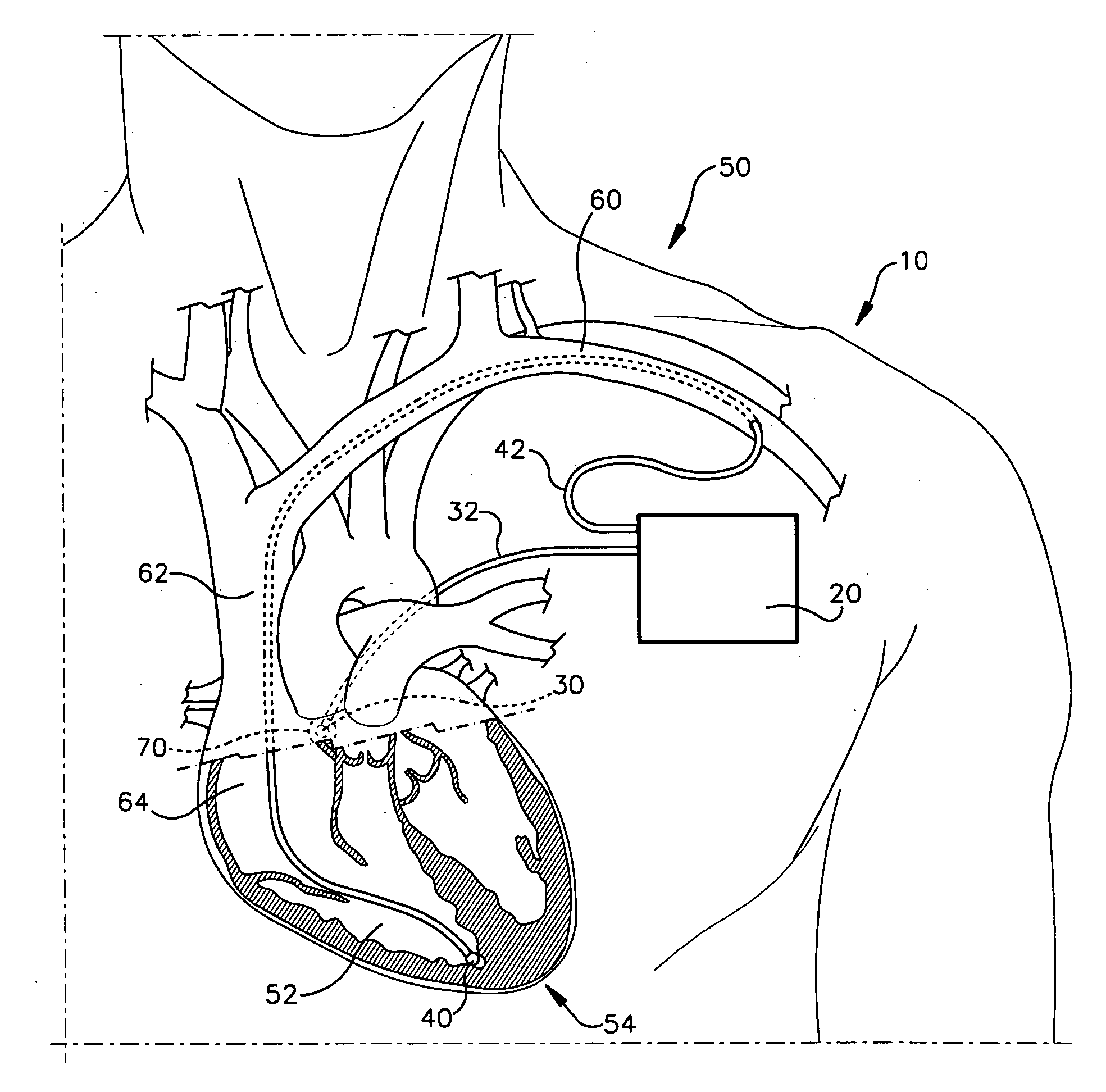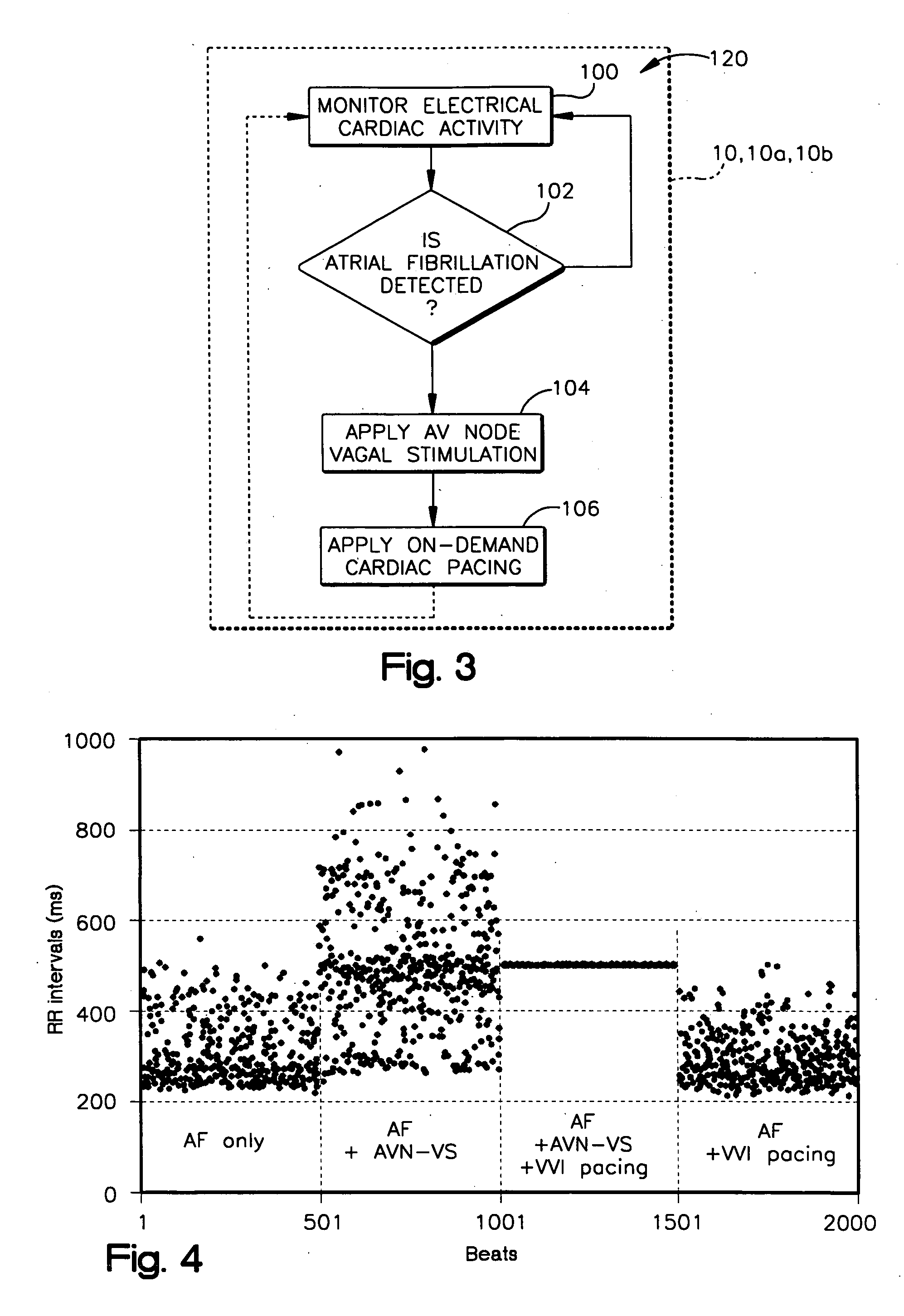System and method for achieving regular slow ventricular rhythm in response to atrial fibrillation
a slow ventricular rhythm and atrial fibrillation technology, applied in electrotherapy, therapy, etc., can solve the problems of irregular ventricular rhythm, ventricular rate, and common and potentially dangerous medical conditions of cardiac arrhythmia, so as to reduce the cardiac rate, reduce the ventricular rate of the heart, and reduce the ventricular rate. effect of the hear
- Summary
- Abstract
- Description
- Claims
- Application Information
AI Technical Summary
Benefits of technology
Problems solved by technology
Method used
Image
Examples
first embodiment
[0052] The control unit 20a may monitor electrical cardiac activity, such as R-R intervals, via the pacing electrodes 30a, in a manner similar or identical to that described above in regard to the This allows the system 10a to monitor the rate or rhythm of the heart 54a and detect the occurrence of atrial fibrillation. The system 10a thus may be an active or “on-demand” system in which ventricular rate and rhythm control is applied in response to detection to an AF episode.
[0053] In operation, the system 10a of the second embodiment operates in a manner similar or identical to that of the first embodiment as described above, with the exception that AVN-VS signals are delivered to the left cervical vagus nerve 154 as opposed to the AV nodal fat pad. The functional block diagram of FIG. 3 thus depicts a process performed by the system 10a of FIG. 7. More specifically, as shown in FIG. 3, the system 10a monitors electrical cardiac activity for the occurrence of atrial fibrillation. Up...
second embodiment
[0058] VS electrodes 172 are implanted or otherwise positioned for stimulating vagal nerve fibers indirectly via various endocardial structures. The embodiment of FIG. 8 illustrates various different alternative locations for endocardial placement of the VS electrodes 172. One location for endocardial placement of the VS electrodes 172 is the AV node 180. With this placement, the VS electrodes 172 apply post-ganglionic vagal stimulation to the AV node 180 directly. Another location for endocardial placement of the VS electrodes 172 is on the inside surface of the atrial wall as identified at 182 in FIG. 8. With this placement, the lead tip of the VS electrodes 172 will be in relatively close proximity to the AVN fat pad. Other locations for endocardial placement of the VS electrodes 172 include the interior wall of the superior vena cava 184, coronary sinus 186, or right pulmonary artery 188.
[0059] The control unit 20b may monitor electrical cardiac activity, such as R-R intervals,...
PUM
 Login to View More
Login to View More Abstract
Description
Claims
Application Information
 Login to View More
Login to View More - R&D
- Intellectual Property
- Life Sciences
- Materials
- Tech Scout
- Unparalleled Data Quality
- Higher Quality Content
- 60% Fewer Hallucinations
Browse by: Latest US Patents, China's latest patents, Technical Efficacy Thesaurus, Application Domain, Technology Topic, Popular Technical Reports.
© 2025 PatSnap. All rights reserved.Legal|Privacy policy|Modern Slavery Act Transparency Statement|Sitemap|About US| Contact US: help@patsnap.com



